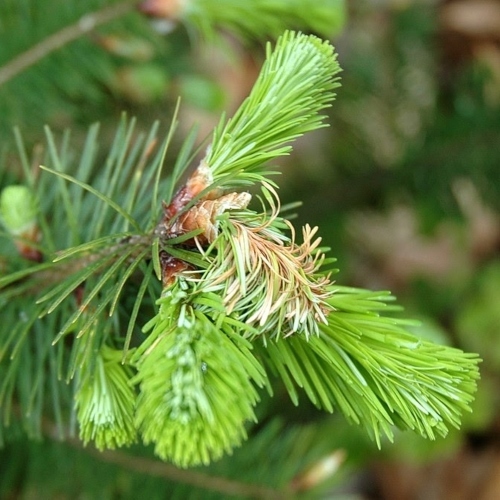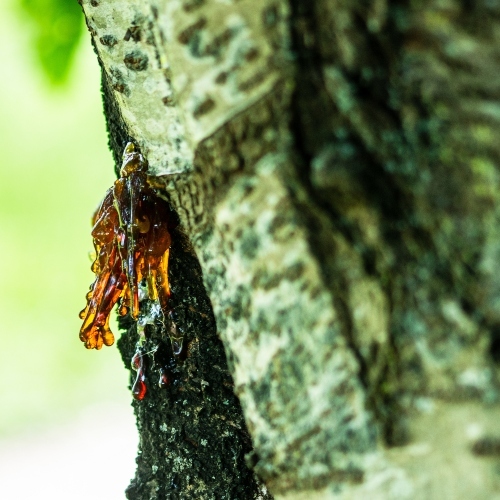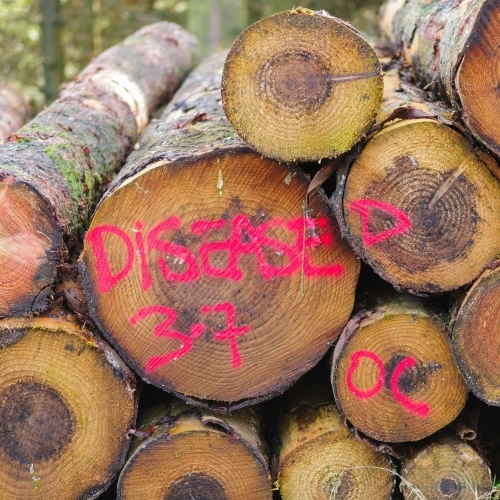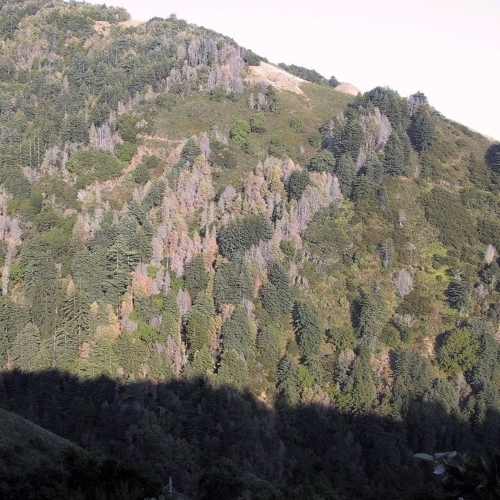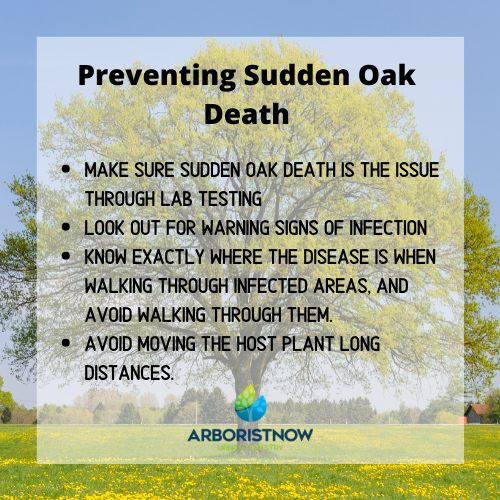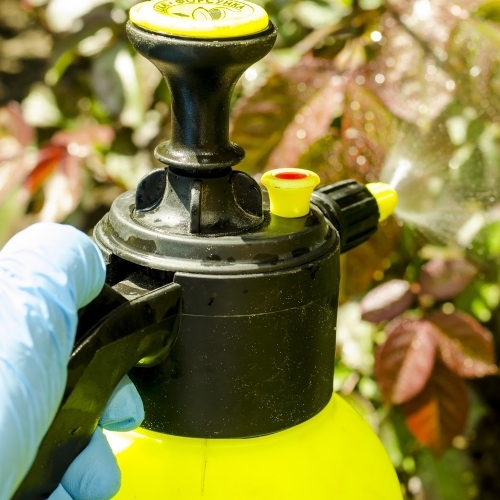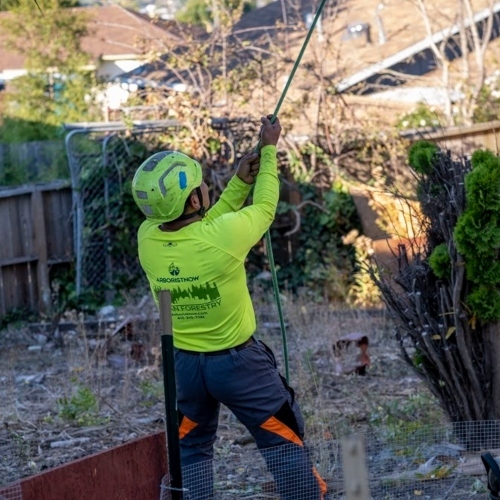A Full Guide to Sudden Oak Death
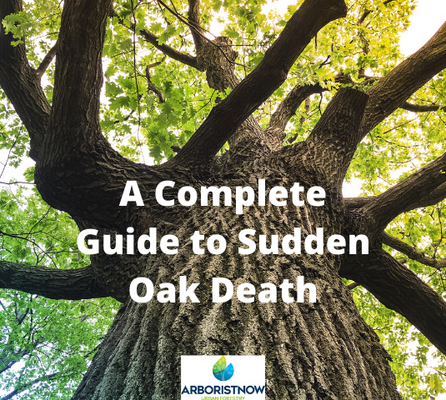
A Full Guide to Sudden Oak Death
Sudden Oak Death can be an intimidating disease to think about for a homeowner with trees in their landscaping or even for tree care specialists. There’s a lot of information and signs to know and look out for, and there’s a lot of misinformation to avoid as well.
We are going to dive deep into the world of Sudden Oak Death – from what it is, how to prevent and/or cure it, and debunking myths about this forest disease. For those of you who want more information on the subject, you have come to the right place!
Let’s start our comprehensive guide with the basics – what is Sudden Oak Death?
What is Sudden Oak Death?
Sudden Oak Death is a tree disease that is caused by Phytophthora ramorum , which is a plant pathogen. The pathogen will infect susceptible trees and quickly cause serious issues. The forest disease mostly affects tan, Live, and Black Oaks.
Instead of the pathogen being carried through the air, it is actually transported through the soil.
Phytophthora ramorum also causes Phytophthora Canker Diseases, Ramorum Leaf Blight, and Ramorum Dieback. It is considered to be exceptionally dangerous because it does affect a variety of trees and shrubs and has killed many trees along the central California coast going into southern Oregon. Also, most trees affected by the disease will most likely die.
Unfortunately, Phytophthora Ramorum may infect your California bay laurel trees before your oak trees, and may not show the same symptoms. The symptoms that they do show will most likely be extremely subtle, so you should be on high alert for this problem. The lack of obvious symptoms means that you may not be aware of the problem until it’s too late for some of your landscape trees.
On top of affecting many trees and shrubs, it also infects camellia, rhododendron, and other common nursery plants.
What Does Sudden Oak Death Do to Your Trees?
You may be wondering what Sudden Oak Death does to your trees. The affected trees will typically be infected through the trunk unless it’s a tanoak, those can be affected through their leaves.
The pathogen causes bleeding cankers, which are essentially calluses on the wood of the tree that may seep out red or black ooze. Other symptoms include canopy dieback and spots on the leaves. Typically tanoaks and other oak trees experience bole or trunk cankers, and non-woody and shrub plants will more than likely showcase the leaf spots (often accompanied by shoot dieback). While all of these are cause for concern, the most damaging is definitely the trunk cankers, which may lead to a quick death for the tree or plant.
Once those symptoms set into your trees and other plants, they become weakened. Meaning that pests, commonly things like bark beetles, may attack and kill it off. Also, once parts of the tree or plant start to die, they may start to have fungi growth as well.
Where is it Most Active?
Sudden Oak Death has been found naturally along the central and northern coast of California, as well as locations in southwest Oregon. All of the natural areas found with this disease have been moist, cool, and foggy.
P. Ramorum also causes Sudden Larch Death in the Japanese larch, which typically happens in conifer plantations in the United Kingdom.
The forests dealing with Sudden Oak Death are made up of both host plants and associated host plants, and they will usually have California bay laurel trees in the general vicinity as well. The disease has also been found in the nursery system in Oregon, California, Washington, Europe, and British Columbia as well.
Preventing and Curing Sudden Oak Death
The next question you may have is how Sudden Oak Death can be prevented or cured altogether. Let’s start with how to prevent the problem.
Preventing the Issue
Preventing Sudden Oak Death before your trees become infected can be tricky.
First things first, you will need to determine with 100% certainty that your tree does or doesn’t have this forest disease. To do this, since the common symptoms can be caused by something else, you will need to get confirmation from a lab. Typically, this can be done through your county agriculture department or through the UC Cooperative Extension office.
Here are some warning signs to look out for:
- If you have a large section of dead live oaks or tanoaks within 1-3 miles of your property.
- If any bay laurel trees nearby start to show signs of infection (this will most likely be subtle)
When you come across any suspicious signs of infection on your trees, make sure to get them tested immediately and then contact professional tree care specialists in your area. Unfortunately, this is a tough infection to prevent once it begins to spread in a heavily forested area since it does move quickly.
It can be very difficult to determine whether the pathogen is present in nearby landscapes. P. Ramorum infects new strands of trees every year, meaning that you always need in tune with the health and symptoms of your trees.
Truly, the best defenses against Sudden Oak Death include avoiding moving the host plant material long distances, knowing exactly where the disease is, and avoiding traveling in infected areas.
Curing Sudden Oak Death
How about curing this infection altogether? Is that an option?
Unfortunately, once it has started and begun to spread, there is absolutely no cure for Sudden Oak Death.
However, despite the name, your tree may not necessarily die when getting this infection. Individual trees will react differently to Sudden Oak Death, and certain types of trees have more of a chance of dying over others.
For example, tanoaks are much more likely to be killed by this infection than live oaks. The disease is still fairly new in California, so more research and time are needed to truly know what the specific statistics are when it comes to Sudden Oak Death.
Successful Treatments for Sudden Oak Death
As of the time this blog post is being uploaded, the most successful chemical treatment for SOD is the fungicide phosphonate (which is commercially known as Agri-Fos).
Agri-Fos is a treatment that only works for tanoaks and true oak tree species such as the California black oak, the coast live oak and the Shreve oak. As for the California bay laurel and other trees that can be infected, this treatment is either not effective or it has not yet been tested on them.
What is phosphonate? It’s a neutralized form of phosphorous acid, which works by traveling through the transport system to reach all parts of the tree being treated. The systematic fungicide stimulates the resistance to pathogen growth and invasion through thickening the plant cell layers protecting the tree and producing defense compounds as well.
It’s important to note that this treatment is, of course, most effective as a preventative treatment. However, in certain cases, some trees that have been very recently infected have benefited from Agri-Fos by having the progress of the infection slowed significantly.
Depending on the type of tree you are treating, this systematic fungicide will be beneficial in different ways. For example, if you have tanoaks, Agri-Fos can really only be used as a preventative treatment. However, for coast live oaks, the treatment can be used for a tree with extremely limited symptoms and progression with the disease.
Phosphonate treatment can be applied in two different ways. It can either be directly injected into the infected tree or by a topical bark application.
While injections are more difficult to apply to a tree, they also don’t cause any chemical drift into the environment. However, topical bark applications are much easier to handle on your own, and they don’t cause any wounding to the tree. Bark application does require more product, and you will need to mix the fungicide with Pentra-Bark, which allows the substance to seep into the tree easily. For extremely large trees, it’s advised that you inject the tree rather than applying it directly to the bark.
As it can be difficult to determine exactly what your tree needs when it comes to phosphonate treatment, we advise that you either contact a professional tree care company to assist you or consider going to a training class to ensure it is applied correctly.
Getting Professional Help for Sudden Oak Death Prevention
For those of you in California, it is important to be aware of this dangerous infection and what it can do to your trees and landscaping. If you have further questions or need professional help, consider contacting a trusted arborist company to assist you.
If you are located in the San Francisco Bay Area, Arborist Now would be happy to help you with any questions and preventative treatment or removal you may need. Contact us today for further assistance!

